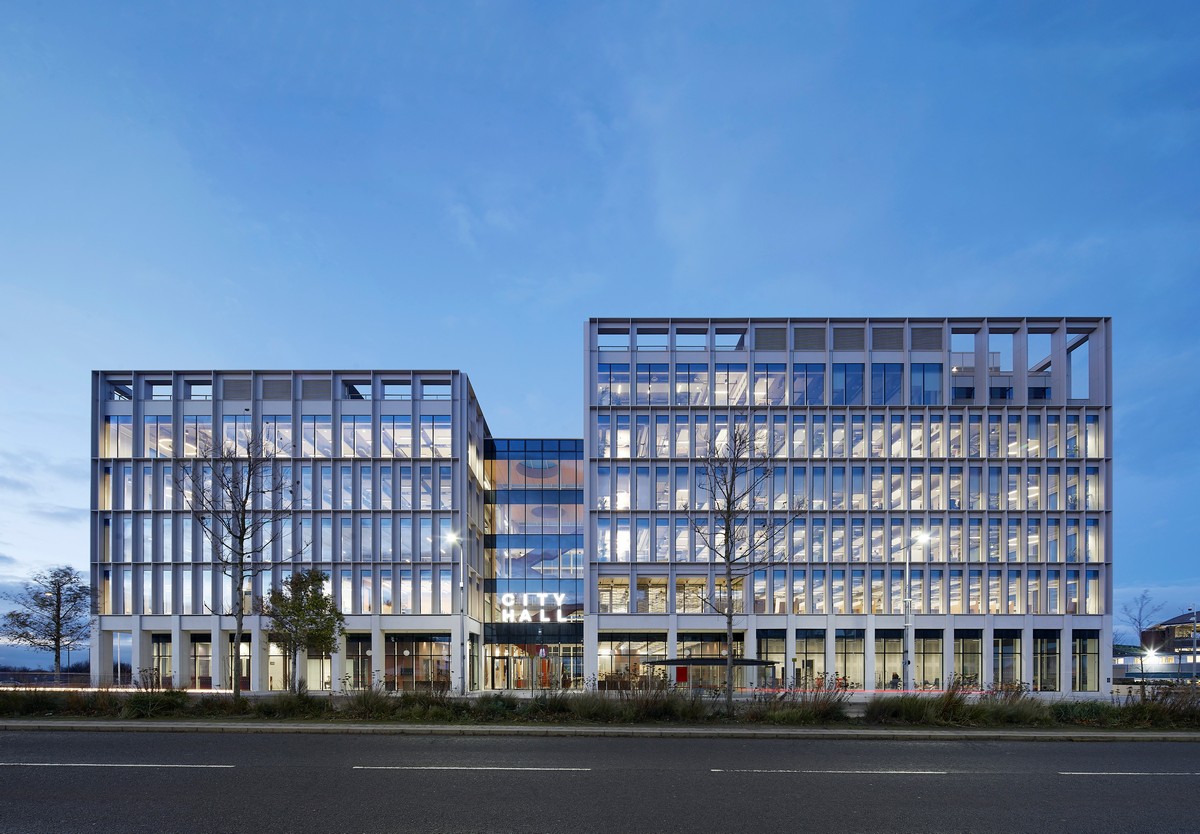BCO space standards for post-pandemic office 2022, British Council for Offices, Architecture News
BCO space standards for post-pandemic offices news
24 Oct 2022
British Council For Offices – BCO reveals new space standards for the post-pandemic office
BCO space standards for the post-pandemic office
The British Council for Offices recommends allocating more space-per-person for the new era of flexible working and to meet zero carbon targets
A report by the British Council for Offices (BCO) recommends a new method for calculating the amount of space needed per person in the post-pandemic world of work. The research identifies a ‘sweet spot’ of 10-12m2 per person.
This will account for the rise in people working from home and hot-desking when in the office, while simultaneously ensuring the workspace meets modern employers’ requirements to promote productivity and wellbeing, as well as targets to minimise carbon emissions.
The BCO members surveyed said that expecting an office to support higher densities requires additional mechanical, electrical and plumbing systems, which increases the carbon embodied in the building as well as energy used while in operation.
Neil Pennell, Chair of the BCO’s Technical Affairs Committee and Head of Design Innovation and Property Solutions at Landsec, said: “The UK has adopted a legally binding net zero carbon target for 2050 and the built environment has an important role to play in helping the country meet its ambitions. Making sure workplaces are designed and operated in the most efficient way will be key to reducing both embodied and operational carbon. Our latest report finds that updating the allocated space per person, and optimising office facilities, is one way to make our workspaces more sustainable, whilst also supporting wellbeing and productivity.”
The new report, ‘The Future of UK Office Densities’, commissioned by the BCO, says the impact of the pandemic on the office sector combined with energy and carbon reduction targets means the traditional office space metrics – which were based on space-per-desk – are less relevant.
The BCO report recommends a more generous allocation of space, based on space per person rather than desk, to meet employers’ current requirements to promote staff performance and comfort by providing a variety of settings in the workspace. The report shows that at the new recommended ratio of 10-12m2 per person, most common workplace issues such as over-crowding and noise pollution are alleviated. In contrast, higher office densities, of less than 8 m² per person, are more likely to cause issues and affect occupant comfort, wellbeing and performance for most organisations.
Most organisations surveyed for the research reported mid-week peaks in occupancy. Reflecting this shifting office occupancy pattern, the report recommends office designers, owners and occupiers plan workspace for varying occupancy levels with contingency for higher mid-week peaks.
The BCO report reflects the shift in office use away from single desk use towards a collaborative style of work and an increased demand for amenity and breakout space, trends that it is believed the pandemic has accelerated.
Richard Kauntze, Chief Executive of the BCO, said: “The pandemic has prompted many organisations to adopt a greater amount of agile and hybrid working, resulting in suggestions that there will be a dramatic reduction in the amount of office space they require. However, the BCO’s latest research shows that this is partially offset by adoption of a more generous ratio of space-per-person, as employers seek to attract their staff to the office and to support productivity by providing an environment that promotes wellbeing and collaboration.
“Our latest report on office density reflects these changes in working patterns, as well as the need to achieve UK net zero targets for 2050 combined with increased energy costs. This report aims to help office designers, developers and owners, as well as occupiers, to achieve the optimal level of density to support the competing demands being placed on today’s offices.”
UK office densities are among the highest worldwide, and much higher than densities in the majority of Northern Europe. In 2001, the average density in UK offices was approximately14.8 m² per desk on a typical floor, but by 2018 it was to 9.6 m² per desk.
The BCO report’s new recommendation of 10-12m2 per person will now inform future versions of the BCO’s ‘Guide to Specification and Guide to Fit-Out’. The research evidence was gathered from various quantitative and qualitative sources as well as 18 interviews and 202 online survey responses from the BCO membership, and detailed analysis of the Leesman Index database.
Nigel Oseland, Lead Author and Director at Workplace Unlimited, said: “The ‘sweet spot’ we have identified is based on research evidence and balances the competing demands of the modern office: On one hand, the post-covid shift that has seen increasing numbers of office workers spending more of their time working from home, with many companies implementing hot-desking for their staff when in the office. And on the other, occupiers’ and building owners’ sustainability targets, which are expected to become more pressing as energy bills rise in the coming months.”
Rob Harris, Chair of the BCO Research Committee and Principal of Ramidus Consulting, said: “The report is based on thorough research commissioned by the BCO. It was important to the BCO to base the research on the first-hand experience of our membership combined with a range of additional data points to provide the most comprehensive possible outlook on future office density. The report has been a collaborative effort and demonstrates the BCO’s role as leading communication platform on the issues related to the creation and use of office space.”
About the BCO
The British Council for Offices (BCO) is the UK’s leading member organisation representing the interests of all those who occupy, design, build, own or manage offices in the UK. The BCO leads on thought leadership and best practice in all issues related to the creation and use of office space – through its research, awards, conference and events programmes. You can learn more about the BCO at www.bco.org.uk.
7 Oct 2022
British Council For Offices Crowns The Best Of The British Office Sector
BCO Award Winners 2022
– ‘Best of the Best’ and ‘Corporate Workplace’: Sunderland City Hall, Sunderland, north east England
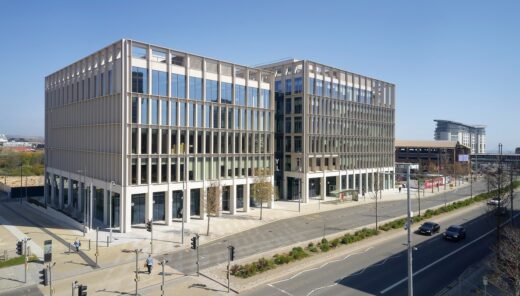
photograph : HuftonCrow
– ‘Commercial workplace’: 80 Charlotte Street, London, south east England
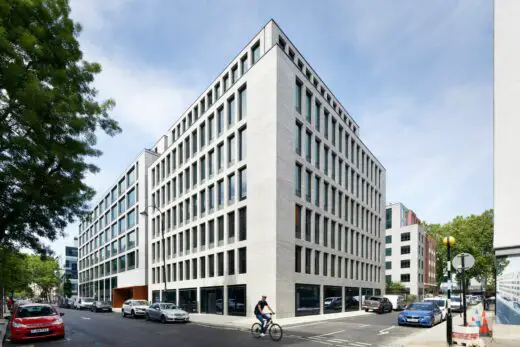
photo courtesy of architects office via British Council for Offices (BCO)
– ‘Refurbished/ Recycled Workplace’: FORGE, Woking, Surrey, England
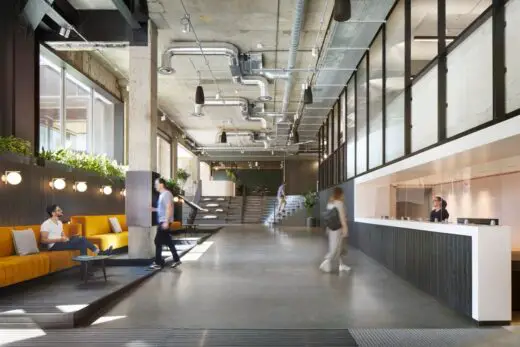
photo courtesy of HawkinsBrown architects via British Council for Offices (BCO)
– ‘Innovation’: Cadworks, Glasgow, Scotland
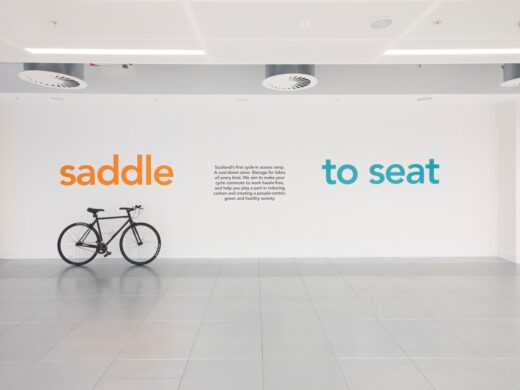
photo courtesy of Cooper Cromar, Cadworks by Alan McAteer via British Council for Offices (BCO)
– ‘Fit Out of Workplace’: Dojo, The Brunel Building, London, England
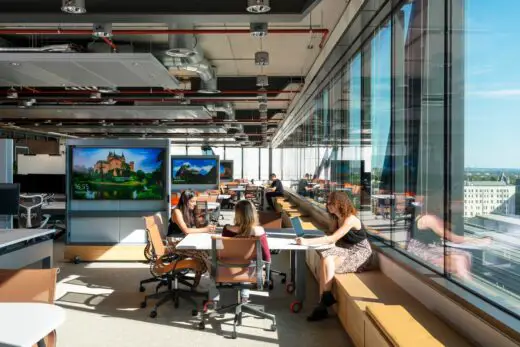
photo courtesy of BDG via British Council for Offices (BCO)
– ‘Projects up to 1,500m²’: Bicester Eco-Business Centre, Elmsbrook, Oxfordshire, England
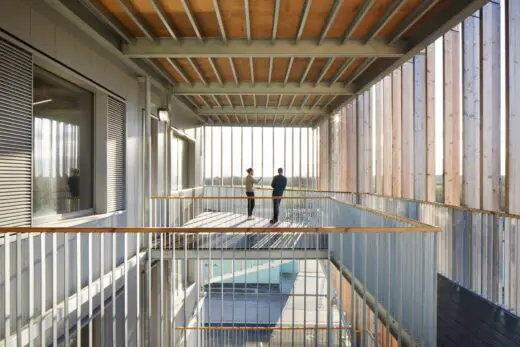
photo courtesy of Architype via British Council for Offices (BCO)
– ‘Test of Time’: The Enterprise Centre, University of East Anglia, Norwich, Norfolk, England

photo courtesy of Keppie Design via British Council for Offices (BCO)
BCO space standards for post-pandemic offices information / images from British Council For Offices on 241022
Location: UK
Architectural Design Awards
Contemporary Architectural Designs
Architecture Walking Tours Europe
Comments / photos for the BCO space standards for post-pandemic office – British Council For Offices News in 2022 page welcome

